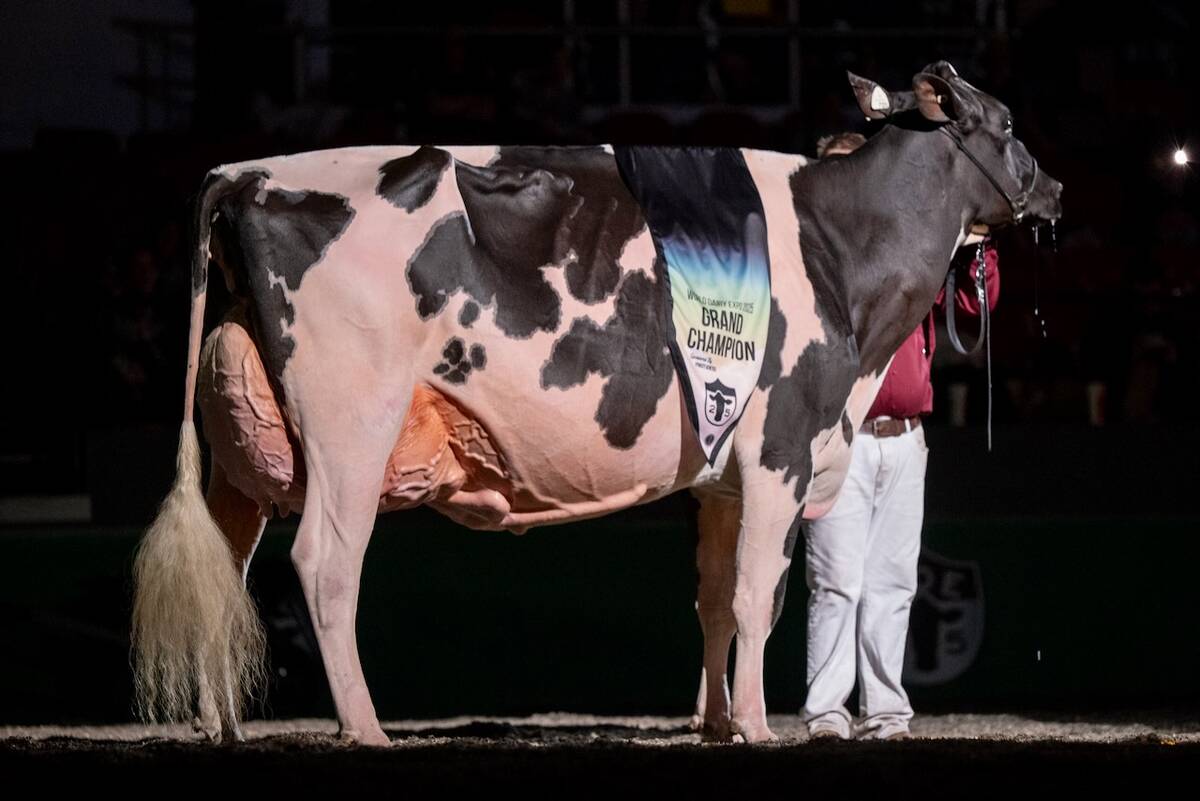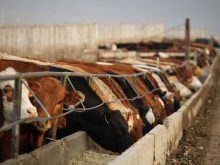KAMLOOPS, B.C. – Colombia is the first South American country to accept Canadian beef and cattle since a Canadian BSE discovery closed trade borders in 2003.
The $7 million deal is part of the Canada-Colombia free trade agreement and eliminates an 80 percent tariff on Canadian beef over a 12 year period.
Colombia will immediately allow duty free imports of up to 5,250 tonnes of Canadian beef and offal.
Canadian Cattlemen’s Association vice-president Travis Toews said getting back into world markets since the discovery of BSE has been slow, but Canada has rebuilt itself to become the world’s largest exporter of grain- fed beef.
Read Also

Canadian-bred cow wins World Dairy Expo Holstein show
A cow bred in Saskatchewan, Lovhill Sidekick Kandy Cane, is the Grand Champion Holstein at the 2025 World Dairy Expo.
The country now sells beef to more than 90 countries with various restrictions.
“There is not one issue that dominates my bottom line more than trade,” Toews told the British Columbia Cattlemen’s Association in Kam-loops May 21.
The cow-calf producer from Beaver-lodge, Alta, who also chairs the CCA’s foreign trade committee, said he values every trade agreement that restores Canadian beef on the world market.
He said the resumption of U.S., Mexican and Russian purchases of Canadian beef added $18 per hundredweight to prices, and the resumption of live trade added another $6 per cwt.
If wider access could be attained in Mexico, Japan and South Korea, he added, it could provide a $250 million benefit to the industry.
Colombia joins Jordan in granting full OIE access, under which trade is allowed as long as Canada disposes of specified risk material and follows other BSE prevention steps.
Toews said these are not large markets but are a precedent for other countries.
Canada Beef Export Federation president Ted Haney said the Canadian beef industry must push for increased trade access because nobody else will do it for them.
He said the creation of the Agriculture Market Access Secretariat in January was a key turning point.
“Almost immediately two pieces of market access were delivered,” he said.
Hong Kong granted wider access to bone-in products, and further access is expected for beef and offal from cattle older than 30 months.
“It was a very large change all because of a technical change in policy.”
Haney said Canadian government officials have resisted negotiating beef trade deals separately from the U.S. but the reality is the U.S. does not care what Canada does.
Canada’s return as a powerful exporter ultimately adds value to the domestic cattle prices, he added, because the country cannot consume all it produces. As well, he said foreign markets pay more for products that have little value in Canada.
Haney said the momentum can’t be allowed to stop.
“We have to deliver on market access or the pessimism will continue.”
Canadians eat about one million tonnes of beef per year. About 800,000 tonnes is domestic production and the rest is imported. It takes three million cows to produce 800,000 tonnes of beef.
“Our industry has to sell beyond this market, maintain this market and demonstrate our commitment to this market. This is why we have to move beyond Canadian borders,” he said. “Whether we are successful is the difference between a six million head cow herd and three million head cow herd in the long term.”















